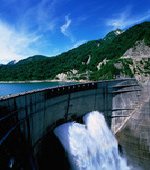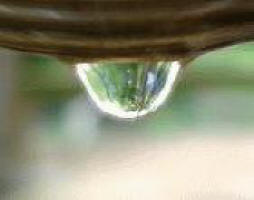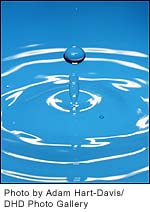 Jordan: Agriculture threatened by worst rainfall in 50 years
Jordan: Agriculture threatened by worst rainfall in 50 years
Jordan Valley Farmers are experiencing a severe lack of rainfall and urgent steps are needed to expand the area covered by greenery and promote the efficient use of water, environmentalists say.
Ahmed Koufahi, executive director of the Jordan Environment Society, a local NGO, said climate change was to blame for the abnormal weather, adding that he feared the worst was yet to come unless officials adopt "a serious policy".
"We need to prepare citizens for the worst." People should not take water for granted, and use it more wisely," Koufahi said.
Jamaini said JVA - a government body responsible for the development, utilisation, protection and conservation of water resources in the Jordan Valley area - decided in January to ban summer (May-September) agricultural production in 2009.
"We decided to ban summer agriculture, which consists mainly of vegetables and leafy greens, to secure water for drinking and daily use in Amman, Irbid and other cities," Jamaini said.
He said JVA was committed to providing water during the agricultural season (October to April) in Jordan Valley, the country's largest irrigated agricultural area.
"We are also committed to providing 11,500 hectares of trees with 50-60 percent of their water needs to ensure their survival," he said.
According to Jamaini, the plan is flexible and will allow farmers to cultivate crops during summer if sufficient rain falls in February.
Jordan does not have lakes or rivers except for the River Jordan which faces water scarcity in its basin. The kingdom's water supply depends on dams or underground reservoirs that collect water during winter.
"Water scarcity is a reality and we have to deal with it," Basel Shehadeh, head of the Jordan Valley Farmers' Association, said. "We cannot assume that water supplies will come to us, as what is available is barely enough to cover main agriculture production."
Experts say most of the country's water reserves come from rain that falls in December and January, but this year there are problems:
"Rainfall to date constituted 32 percent of the average annual rainfall in northern areas and 22 percent in central areas," Abdul Halim Abu Hazeem, head of the Jordan Meteorological Department, told IRIN. The percentage goes down as you move southwards, he said.
Adnan al-Zubi, spokesperson of the Ministry of Water and Irrigation, told IRIN the country's 10 main dams currently hold less water than at any time in recent years. "Dams hold 59mcm [million cubic metres] to date, about 27 percent of their 327mcm capacity. This figure was about 100mcm this time last year," he said.
Jordan Valley has 45,000 hectares of arable land of which 27,500 are cultivated, Jamaini said, adding: About 60 percent of those involved in agriculture are small farmers, and they fear the government might stop pumping water to their farms and re-divert King Hussein canal to the capital, Amman, for domestic use.
| Contact information | n/a |
|---|---|
| News type | Inbrief |
| File link |
http://www.irinnews.org/Report.aspx?ReportId=82844 |
| Source of information | Irin News - © IRIN 2009. |
| Subject(s) | AGRICULTURE , DRINKING WATER , HYDRAULICS - HYDROLOGY , NATURAL MEDIUM , POLICY-WATER POLICY AND WATER MANAGEMENT , RISKS AND CLIMATOLOGY , WATER DEMAND |
| Relation | http://www.semide.net/countries/fol749974/country045975 |
| Geographical coverage | Jordan |
| News date | 11/02/2009 |
| Working language(s) | ENGLISH |
 you are not logged in
you are not logged in





